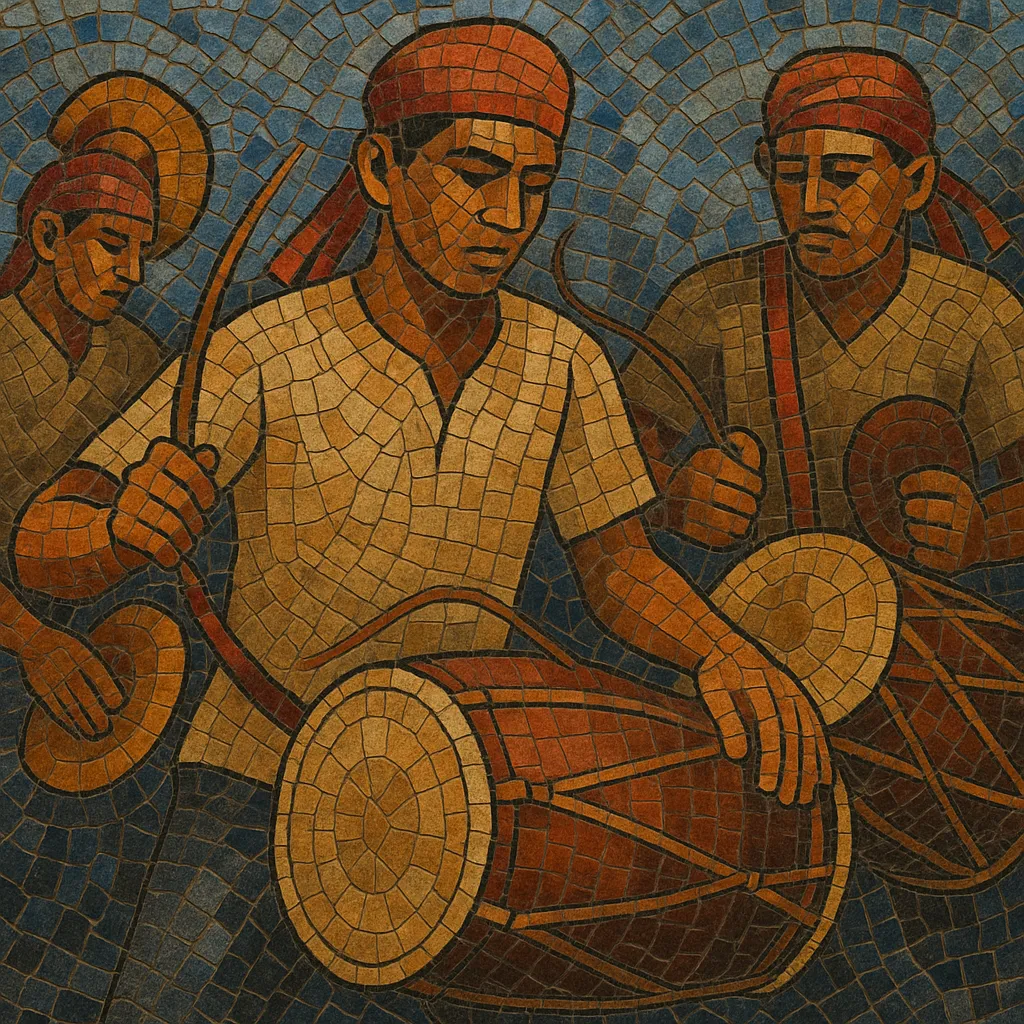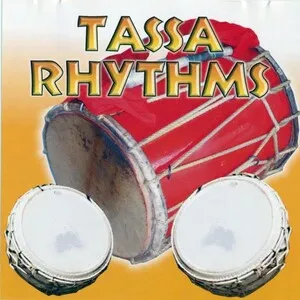Tassa is an Indo‑Caribbean processional drumming tradition that took shape in Trinidad and Tobago among Indian indentured communities in the late 19th century. It centers on a small, high‑pitched kettle drum (the tassa) played with thin, flexible sticks, supported by a deep two‑headed bass drum (often called dhol) and clashing brass cymbals (jhanj/jhaal).
Born out of North Indian tasha/naubat processional practices, tassa became a signature sound of Hosay (Muharram) observances, Hindu weddings, and street festivities. Ensembles feature a lead “cutter” drummer who improvises dazzling patterns over steady accompaniment parts, creating a bright, driving, and celebratory sonic wall that is both dance‑inducing and ceremonial.
Tassa emerged in Trinidad and Tobago during the period of Indian indentureship (1845–1917), when migrants—primarily from North India—brought processional drumming practices related to the tasha/naubat tradition. By the 1880s, tassa ensembles were documented accompanying Hosay (Muharram) processions, forming the nucleus of a new Indo‑Caribbean sound shaped by local materials, makers, and community needs.
Across the early 20th century, tassa became embedded in Indo‑Trinidadian social life. Muslim and Hindu communities adapted repertoire for religious and life‑cycle events (Hosay, weddings, and public celebrations). Instrument construction localized: clay or metal shells with goat skin heads for tassa; stout, two‑headed bass drums; and large brass cymbals. Distinct roles—cutter (lead), support/side tassa, bass, and cymbals—crystallized, alongside named rhythms used for different contexts.
With the rise of formal competitions, community organizations, and diaspora events, tassa developed virtuosic soloing, faster tempos, and crisp ensemble choreography. While remaining a ceremonial music, it increasingly appeared on stages, recordings, and cultural showcases, gaining recognition alongside calypso, soca, and chutney within Trinidad’s multicultural soundscape.
Indo‑Caribbean migration spread tassa to North America and the UK, where youth ensembles, workshops, and academies sustain the tradition. Modern makers experiment with synthetic heads and durable shells for touring, while players preserve core repertoire (e.g., wedding and procession beats) and innovate with new breaks, tempo shifts, and arrangements that suit amplified, festival settings.



